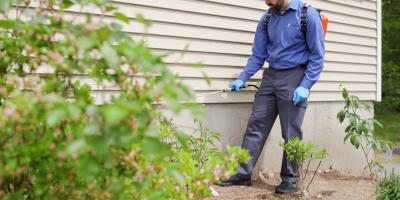Pantry Pest Prevention

What are “Pantry Pests” and where do they come from?
Pantry pests are those organisms that attack our non-refrigerated (or frozen) foods, including pet and [wild] bird food. They are mostly insects, a few are mites – even mice attack these dry stored foods. Mice, as we will see, play a big role in pantry insect pest problems. We call these insects and mites, stored product pests (SPPs). As most insect species are beetles, it should be no surprise that the greatest number of species (some 150 or so at last count) belong to the beetle group (Order: Coleoptera).
We run a very tight ship, so how did they get inside our home?
We’ve learned a lot about supply chains this year and we’re all prisoners of the weakest link in those production and distribution networks. Human foods are highly monitored/inspected, but the same cannot be said for pet foods, especially wild bird seed. Like a box of Cracker Jacks, some come with hidden surprises! A portion of those surprises come indoors from farmers’ grain and feed bins during warm months. One thing is for certain, once inside, their goal is to conquer and infest every available resource.
How to know if you have them?
- Start with people food. Now is a good time to use-up or discard outdated items, especially those that have been opened. Take-on your pantry in manageable chunks; start high and work to bottom shelves; and vacuum any debris/dust as you go. Look for live bugs or “worms” or any change in appearance or texture with the food product (webbing, clumping, etc.). Dispose of suspicious or infested products along with used vacuum bags in outside trash. Save any bugs or droppings for identification (use tightly sealed containers).
- Now expand your search to dry pet foods (including treats) and wild bird mixes. Once opened, bags of these items should be stored in rodent and insect-proof containers (like steel trash cans) with tight-fitting lids. Feeds stored in barns, garages, basements, etc. are of greatest concern due to ease of access by mice.
- Places that mice can or have been known to access are a huge concern because mice stash or horde food for later consumption. These food caches often exceed the annual caloric needs of rodents many times (10 or more) over! The secretive behavior of mice means that these food stores are discovered by stored product pests long before people are aware and well before mice consume them. So, mice greatly complicate stored product pest issues because eliminating these (SPP) pests requires disposal of ALL infested foods and sealing/securing any item that could be infested.
- Hard to reach places where spills (or mouse caches) are seen or suspected can be removed and confirmed using vacuum crevice tool.
- Take your time! This is not a quick process and best viewed as a journey of discovery. Protect your food first, then pets, birds, etc. Each step should bring you closer to conquering these pests without the use of insecticides.
Surprising News: No pesticide applications! In most cases, only these steps (1-5 above) are required.
This “search and destroy” mission is all that’s needed in most instances. Once your food is secure, you can rest assured that these pests are not eating you out of house and home. We have tools that greatly assist: Monitors and pheromone traps. These sticky cards contain the scents (pheromones) that insects use to communicate (most use sex pheromones – extremely diluted odors females use to attract mates). In the hands of your highly trained Service Professional, these devices not only determine presence/absence of pantry pests, but their location as well.
Two most common Stored Product Pests: Indian meal moth & sawtoothed grain beetle:
Indian meal moths were named for the food in which they were first found – cornmeal. At the time (1873), cornmeal was known as Indian meal. Like most stored product pests, only the larval (worm-like) stage eats – the adults are short-lived (1-2 weeks) and do not eat at all. Meal moths and sawtoothed grain beetles have very similar diets: All types of processed, milled, or damaged grains (and the foods produced from them) can be attacked. Adult moths are about ½ inches in length and have a coppery luster to the last half of their wings. Immature stages are worm-like larvae which grow to be ½ to ¾ inches in length and are creamy white (sometimes with a pink cast). Larvae produce silk which they use to web-over their food sources and produce cocoons. The last larval stages are often seen climbing walls, cabinets, or product packaging to find a suitable (dry) places to transform (pupate) into adults.
The sawtoothed grain beetle is named for the sawblade-like projections along the edge of its thorax (middle part between the head and abdomen). It too cannot consume whole, intact grains, and only larval stage does so. These tiny (1/8 inches long or less), brown and flattened beetles can slip between the flaps of paperboard packages. Consequently, most food packaging requires an inner liner (bag) to exclude them. Packaging of pet treats (and other items) that lack this second defensive layer should be deemed suspect.
Bottom line:
Pantry or stored product pest issues can seemingly arise out of nowhere. To eliminate them we must remain calm and systematically search for the source. Once found, the solution is to dispose of these infested foods in outside trash containers and remove any spills. Like all pest management issues, JP Pest Services employs IPM (Integrated Pest Management) an approach that dictates pesticides be used only when and where needed. This is a prime example of a situation that usually requires no pesticide at all. However, like everything we do, it requires expertise, experience, and attention to detail. There is no silver bullet or magic pill – finding and disposing of the infested food is paramount to control. JP Pest Services’ highly trained Service Professionals have the skill and training to help you understand and deal with pantry pests or any pest situation. At JP Pest Services, we are committed to improving lives through education and stopping pests in their tracks, thereby, making life better and more enjoyable for us all!



